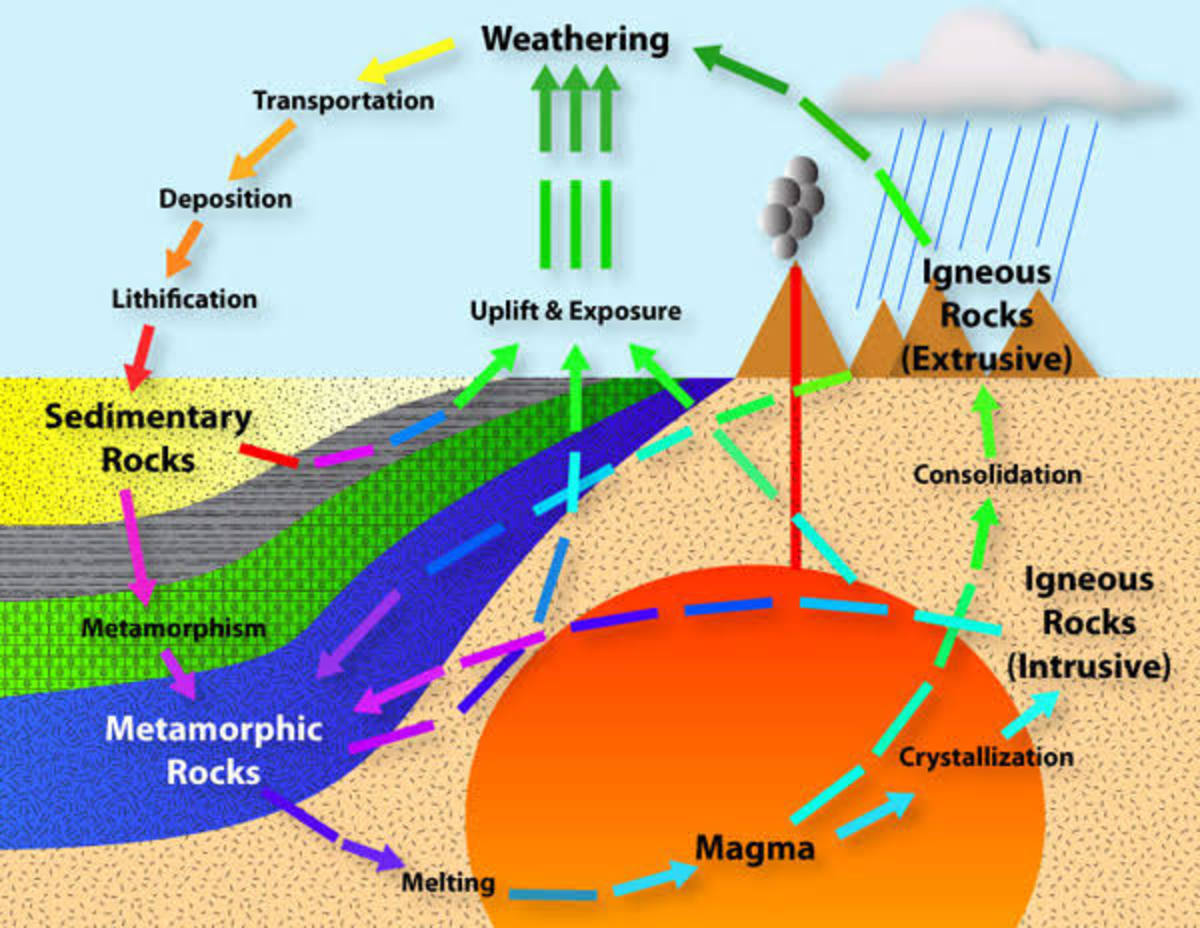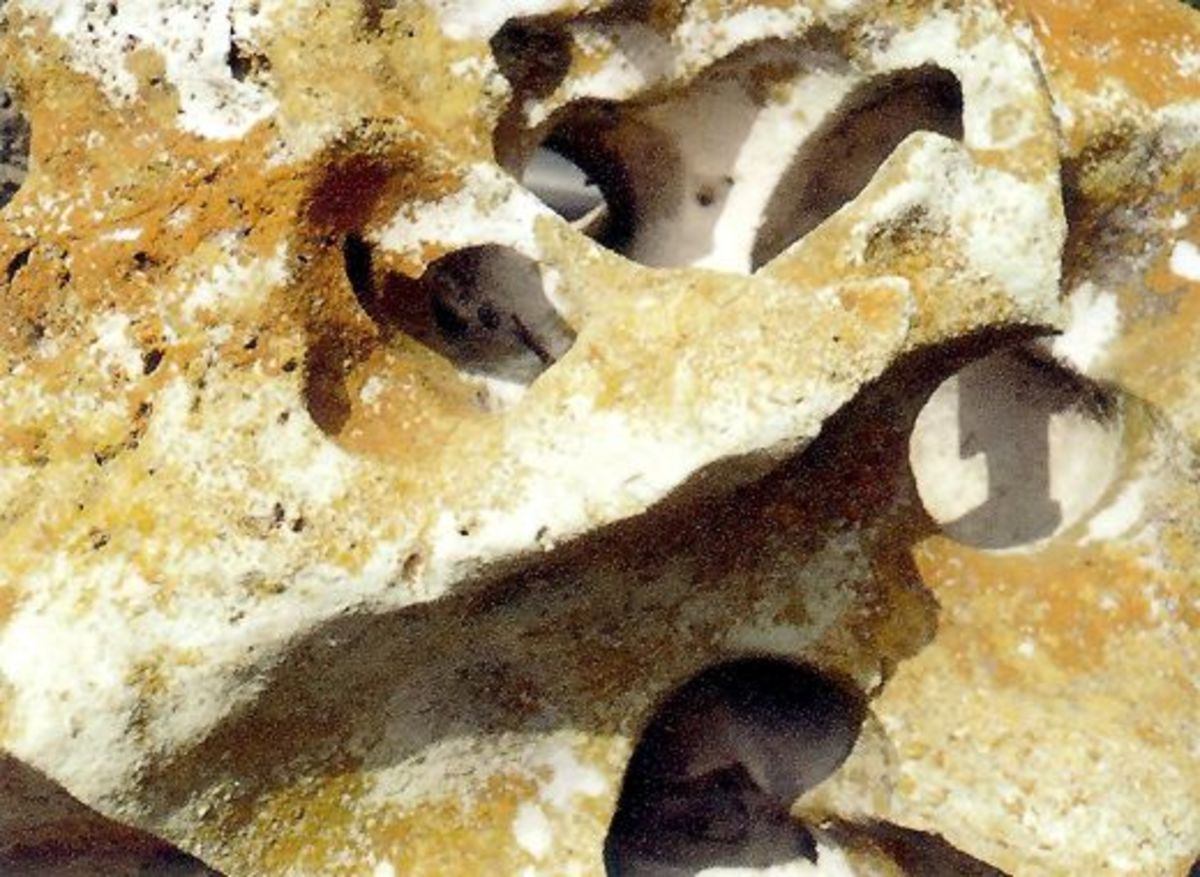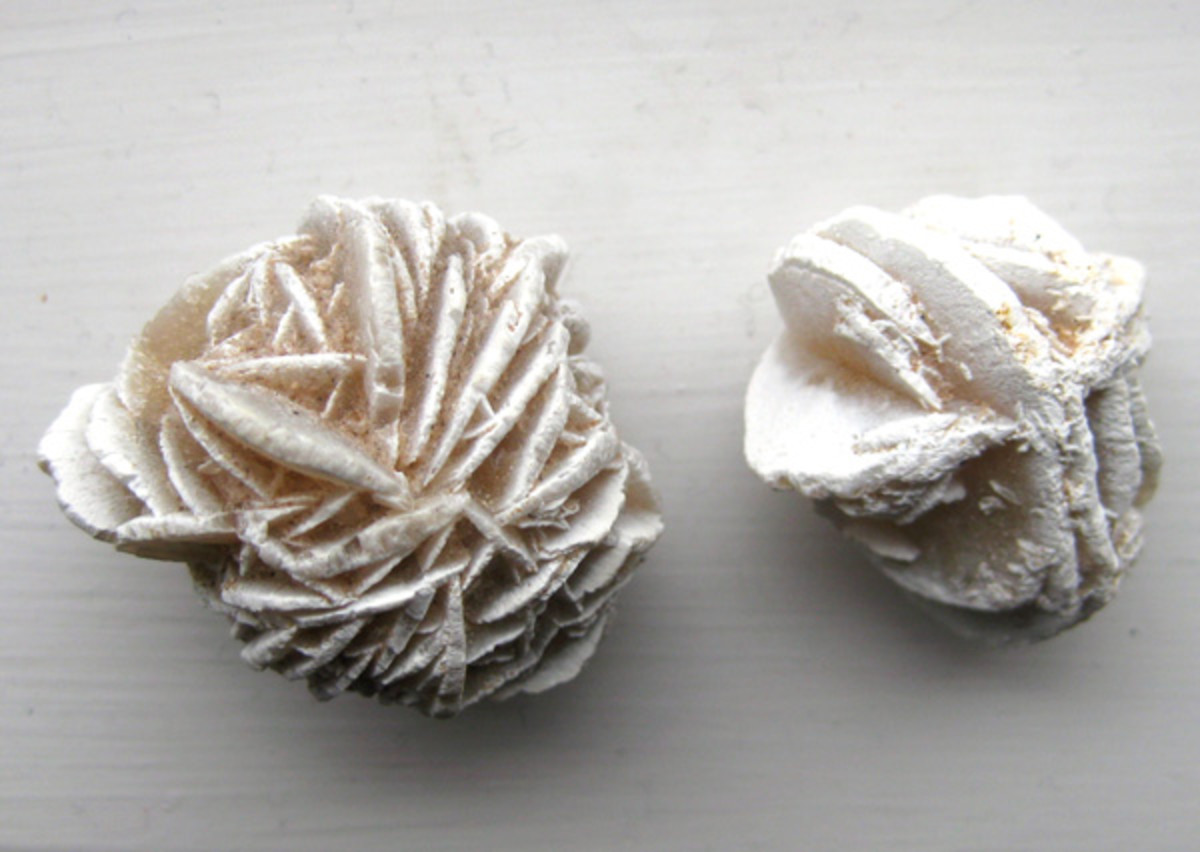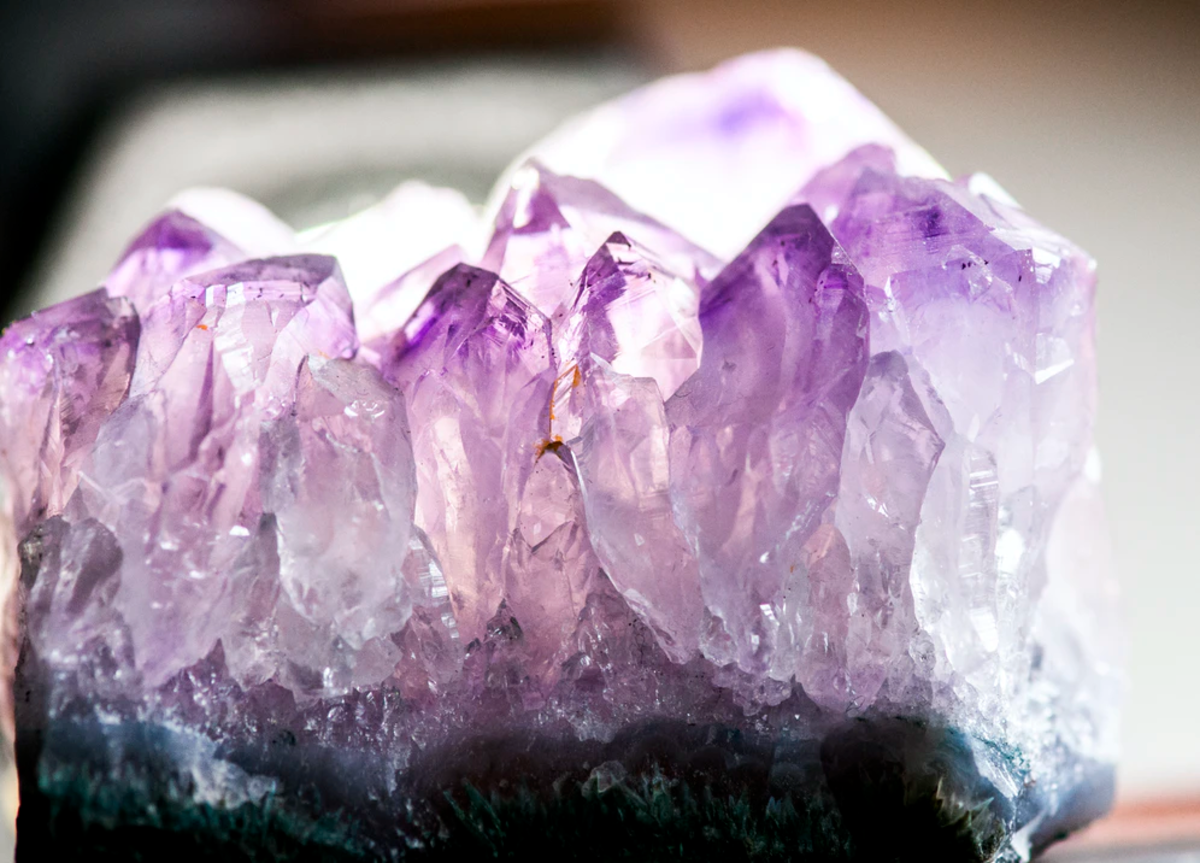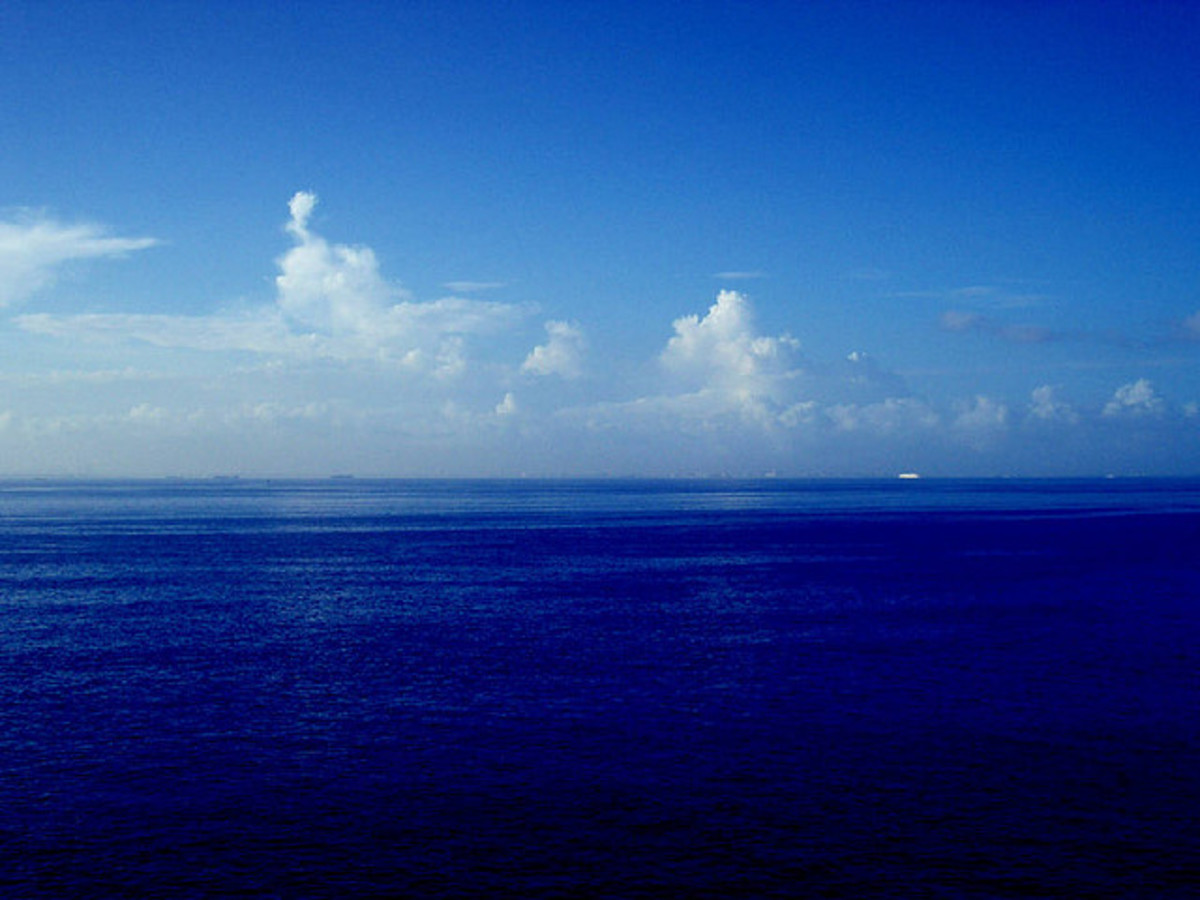Mudfossils: A New Look at Local Beach Rocks
I am No Geologist
The first thing I must mention is that I am not a geologist. I have a basic understanding of how rocks form and erode through time. However, my own common sense tells me that there is something not entirely natural about the formation of some rocks. The megalithic structures like Stonehenge, dolmen structures, and areas of rock which are described as 'vitrified' (literally melted rock) are all unexplained constructions.
Wise Up
I began to look more closely at the rocks on my local beach, after I had watched a couple of videos from the Wise Up Youtube channel. The guy doing the videos is very down to earth, in his Northern, common-sense analysis of ancient megalithic structures. (The only problem with the channel is that he has no time for those who can't see his point of view).
It is far more believable that the ancients did not have some mysterious, lost building technology, to cut perfect circles and squares in rocks. His theories avoid the problems of how the rock blocks were transported great distances, as well.
It is less of a stretch of the imagination to imagine ancient civilizations having technology comparable with our own, than to say that they could melt and mold rock by wizardry.

Theory
There are a few basic points which need to be noted when analyzing rock formations following this theory.
- If there is a form which is too straight edged and regular it was probably built of a softer material like wood which then turned to stone, rather than it being cut from the stone.
- Underlying structure can sometimes be perceived as raised lines in a flatter surface. in this case a surface was applied over a wooden framework (like mud or cement) and the whole has later hardened into rock.
- Indentations or voids can be perceived where parts of the structure have not been covered (and have been exposed to natural erosion) and have rotted away. These voids can sometimes indicate where nails held a wooden structure together.
- Vitrified rock is not melted rock but melted and twisted metal which has been submerged in a great flood and turned into rock. (in the same way that submarines under the ocean accumulate limescale and petrify).
Structure
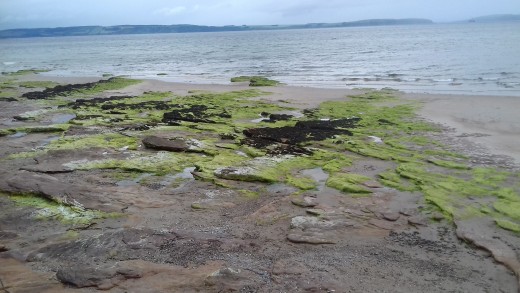
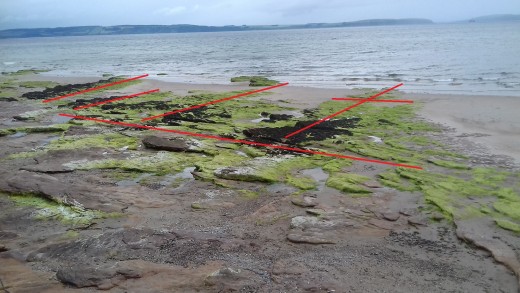
Geology
According to mainstream geology, all the curious features I am going to discuss in this article can be explained as simple erosion. However there may be more to this than meets the eye. The Encyclopedia Britannica Online says:
"Bedding in sandstones, expressed by layers of clays, micas, heavy minerals, pebbles, or fossils, may be tens of feet thick, but it can range downward to paper-thin laminations. Flagstone breaks in smooth, even layers a few centimeters thick and is used in paving. Thin, nearly horizontal lamination is characteristic of many ancient beach sandstones. Bedding surfaces of sandstones may be marked by ripples (almost always of sub-aqueous origin), by tracks and trails of organisms, and by elongated grains that are oriented by current flow (fossils, plant fragments, or even elongated sand grains). Sand-grain orientation tends to parallel direction of the current; river-channel trends in fluvial sediments, wave-backwash direction in beach sands, and wind direction in eolian sediments are examples of such orientation." https://www.britannica.com/science/sedimentary-rock/Sandstones
Erosion or Wood?
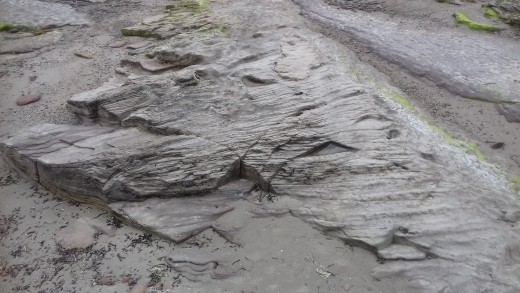
Details of Fig 3.
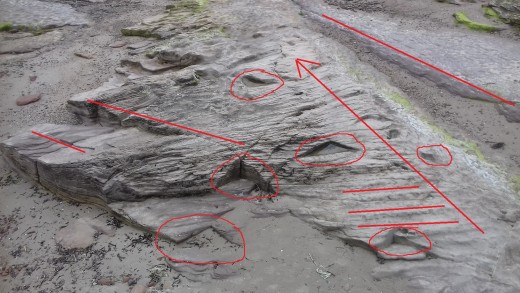
Foundations?
The first most noticeable thing about this image (other than the fact that it looks like wood) is the regularity of the curiously triangular indentations in the rock. These almost seem to follow a straight line (indicated by the arrow in fig 4.) These could be formed naturally by erosion of small stones against the rock, however it is unlikely, due to the orderly manner of the shapes.
Perhaps they were the bases of pillars which eroded away. I get the feeling that this whole beachscape is, in fact, the foundation remains of some buildings, the upper portions of which have long since vanished.
They may not even be very ancient buildings. the process of fossilization does not take as long to occur as most geological processes (contrary to popular belief). The history of this area of Scotland includes tales of Viking settlements nearby.
The sloping section of rock to the left of the images seems to me be an entrance-way or ramp into the interior of the structure. The lines visible at the front of the picture could even be steps leading down.
Can You See the Raised Beams?
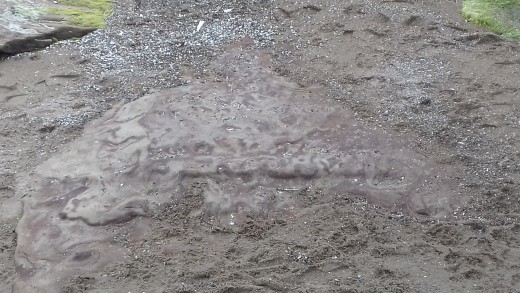
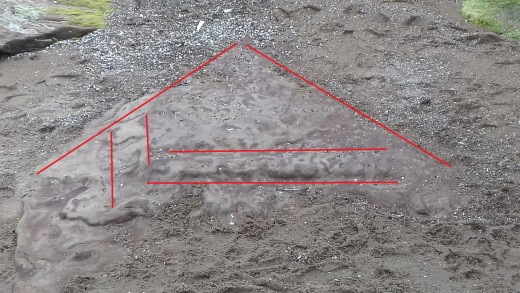
Blood Stones
In this picture (Fig 6.) it looks like these are the beams of a roof which has been flattened in some cataclysm and left to turn to rock. Perhaps the settlement was swamped, with the encroaching tides, and the buildings abandoned.
However one explanation which is put forward for the colours in the sandstone (and hematite which I have picked up along this shore, and used to make pigment for painting with) is that it was created by squashing down living things. The hematite - blood stone - could really be made of the blood of those who died.
Definitely Not Natural
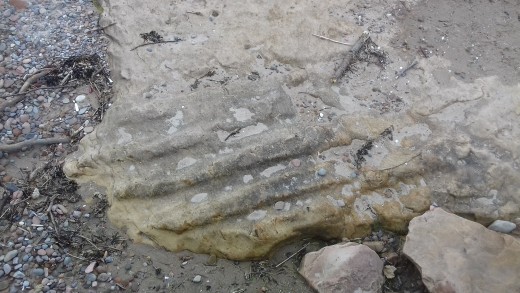
Similarly, this picture (Fig 7.) may show the bars of a window or a grill in the floor which has been silted up, and the gaps filled with mud, which then turns to rock.
Indented Sections
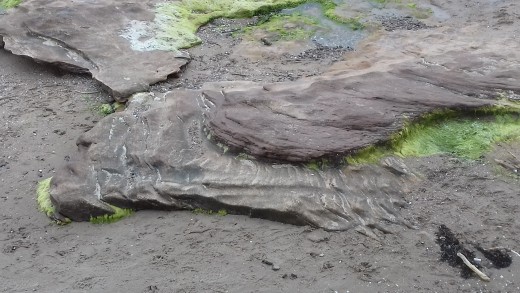
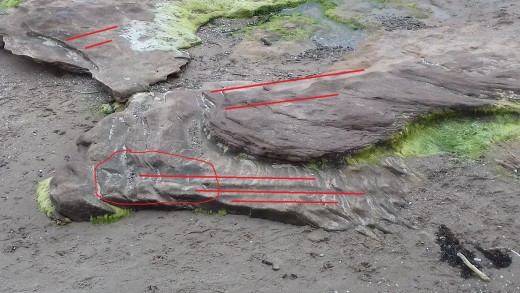
This (Fig 9.) looks like a large object like a hammer or axe might have once rested here and later eroded away. Another long object has rested nearby in the upper right.
Check Out the Science Behind Mudfossils
Dark Red Blood Rocks
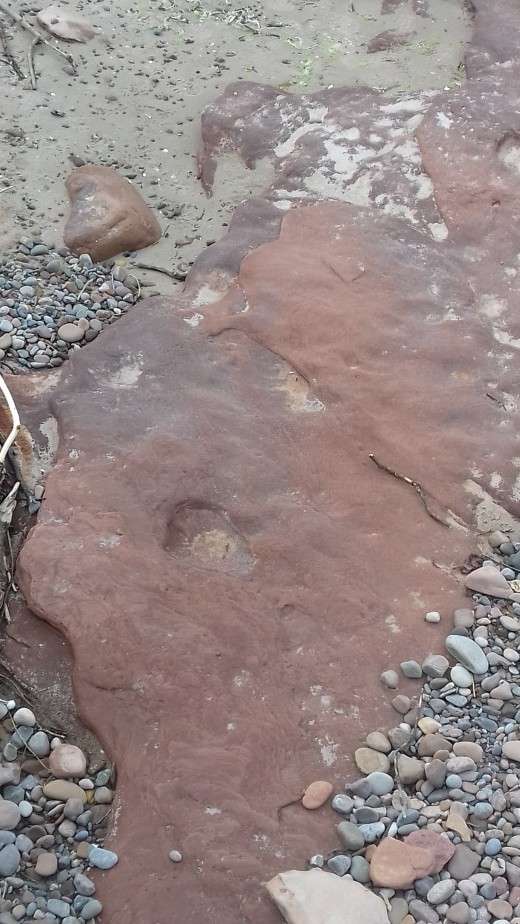
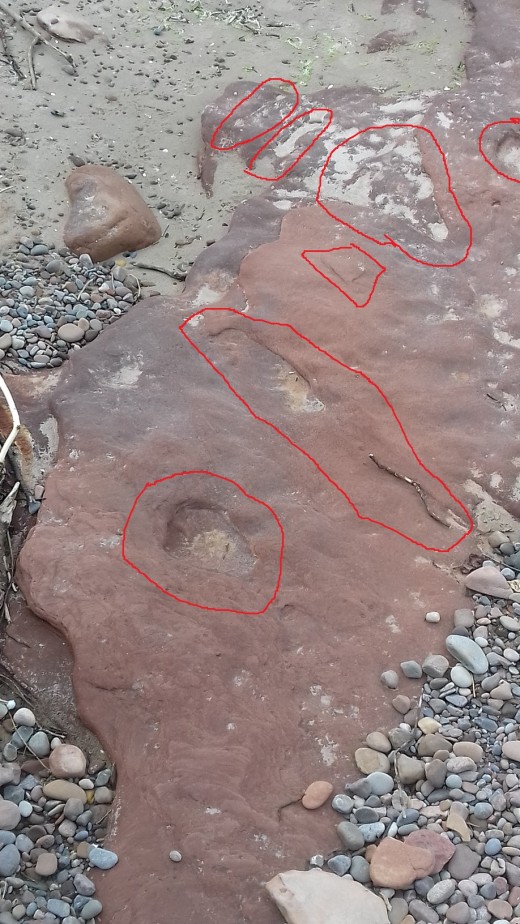
Figs 10. and 11. here show what appears to be the outline of a poured plaster covering over the main structure. There are some indents in this which look like footprints, and there are what might be more steps in the upper left. There is also a raised square area which appears just below the triangular area where the poured plaster effect is noticeable.
Or could it be something else which forms a layer over this structure? Note how dark red it is.
Very Interesting Rock
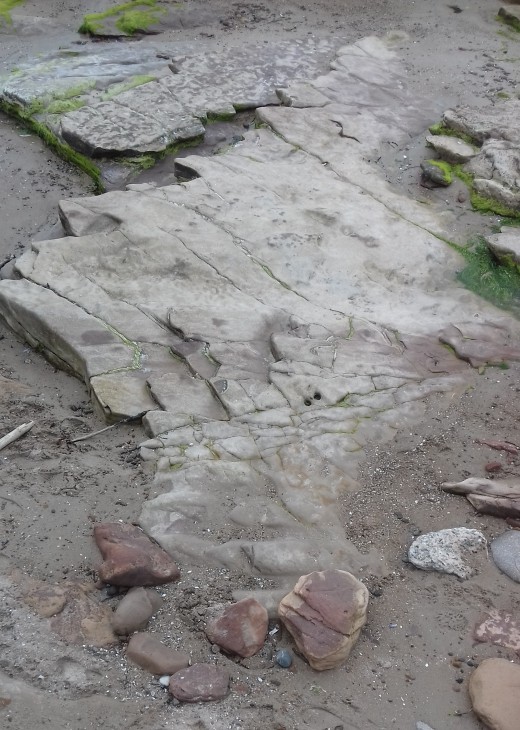
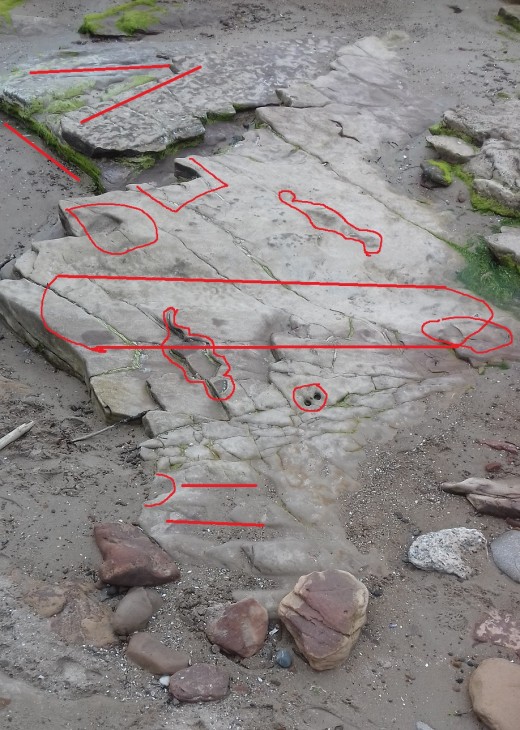
Pompeii?
I've left this photo to last because there is a lot in this.
First there is the beam which is circled at the center of the image. Then there are the two little holes which look far to precise to be naturally occurring. The square-cut indent in the side of the structure at upper left is also very interesting. I don't know what this might have been a part of, but it is certainly not natural either.
There are other indents in the left side of the rock structure which might have been fastenings for beams, perhaps. There are also indents (or, again, what might be steps) at the front of the image.
However the most intriguing thing about this is the two forms. These are just indents of what look like small figures. This is similar to how the people of Pompeii would have looked like on discovery (before plaster casts were taken). Note also the blood-red of the areas they lie in and of the smaller rocks littering the foreground. Could these be body part rocks, like in the mudfossils' video?
Conclusion
I would need to do more research into this subject. However, for the moment this serves as an overview for the possible results of a very simple analysis. It is probable that I am completely wrong about this, and the forms I am seeing are merely quite commonplace features of erosion.
But I have walked over these rock formations all my life, and since I first stepped across them, at the age of 3 or 4, I have believed them to be more than mere rocks. Their shapes are too fantastic, and they are too magnificently coloured. Was it really an abandoned Viking outpost, long ago? Or, maybe, they were dwellings from further back in time? Before the flood, perhaps.

